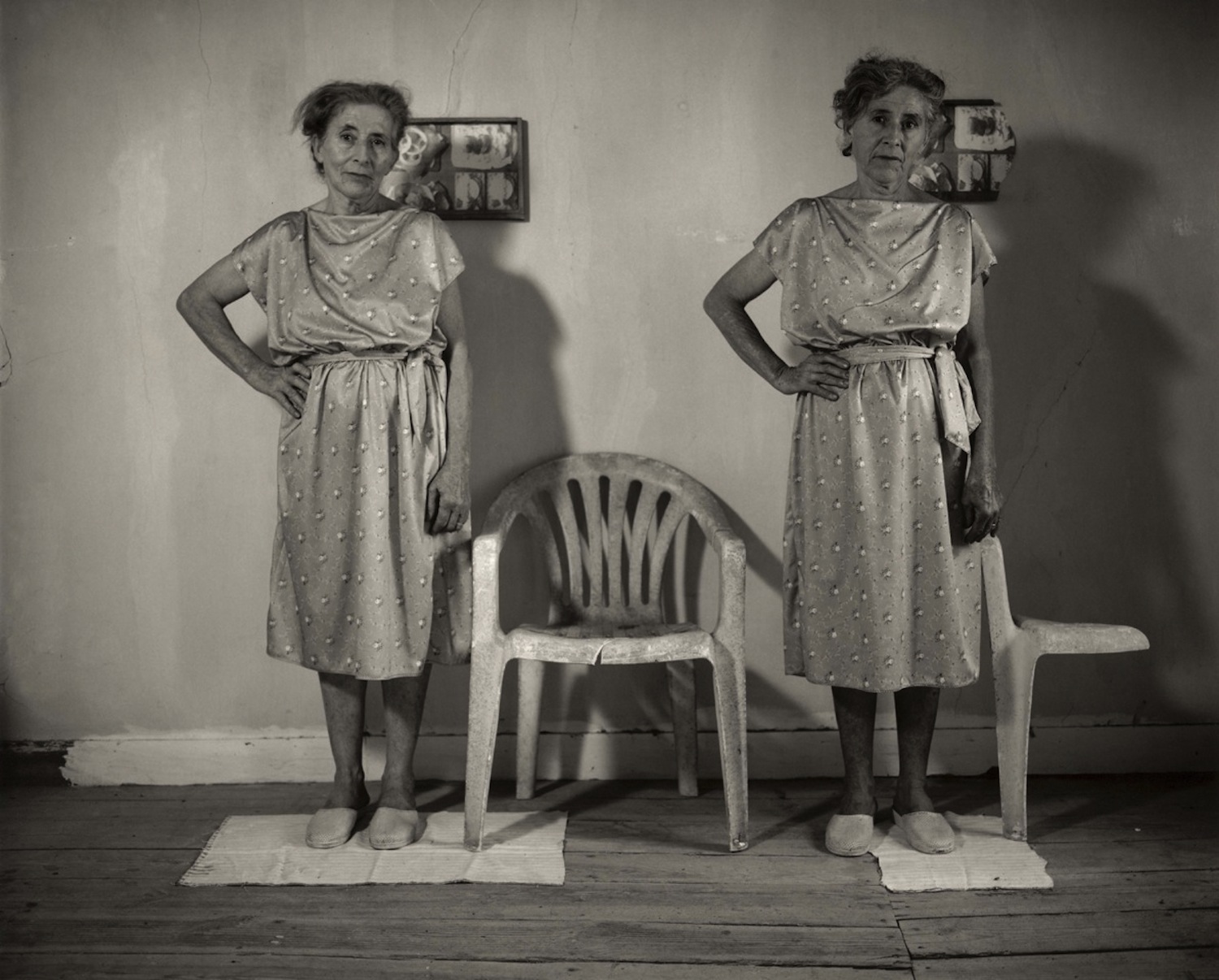Brigida Mendes work proposes ‘a sort of comic invocation of the image as pure representation and also as an allusion to the world as a space where real and representation tend to be the same.’
Mendes recent work has all been planned in London, shot in Portugal and printed in London. In Series 05/2, the sitter/s are her own family (her mother, her mother’s twin sister and–work out where–her own sister), the locations were all set up in her grandfather’s living room, at his now abandoned house, near her mother’s house.
‘With the 05/2 series piece I wanted to test the viewer by creating an image between the illusory and the real, in a way trying to deceive in another way leaving visible the traces of the illusion and a sense of revelation. Both images recreate in real space two photographic techniques based on the manipulation of the same photographic negative printed twice in each image.’
[ms-protect-content id=”8224, 8225″]
‘The 06/1 series are almost mimetic, almost didactic, and in a comic way relate to a sense of spectacle and intend to create a tension between an idea of repetition and monotony and in parallel the idea of achieving a striking effect using the most economy of means.’
The roots of her work lie not in the implicit assumptions of how you make a photograph but in the popular and populist traditions of the Picture Puzzle such as ‘Spot the Armadillo’ and ‘How Many Mistakes in this Room’?’ ‘I feel very influenced by a certain sense of humour, a sense of method, logic and forms of experimentalism. Also I’m very interested in the relation of photography with the objective world and alternative hypothetical realities.’
Like Magritte and Ernst, Mendes deals in simulation then dissimulation in a tense parallel universe where figures and their surrogates are deployed together with the talismanic detritus of the Everyday. Objects in the drama, tables, chairs and bins, are perhaps inert, perhaps complicit. Figures and their familiars (06/1) demand a forensic scrutiny that only increases the richness of reference. It is important that the accessories incorporated in the work are not artificially requisitioned but discovered around the landscape around the abandoned house.
‘I think of my work in relation with the viewer, inviting the viewer into it; I intend at some point to challenge the viewer towards the reading of my works. I think my work shows an engagement with the viewer that comes from a sense of spectacle that exists in the work, and also from some sense of strangeness or lack of recognition that is displaced. Some pieces intend to be more playful than others, accentuating the traces of a performance that is often clearly imposed and somehow impossible. I want also to state a tension between the idea of effort and joy.’
Her photographs are arresting because they fiercely parade symmetries and mirror correspondences in a highly individual, even shameless way. She proposes no subtle relationship of space explored, no calculated compositional artifice, or deliberate cultural quotation. Photography is annoyingly prey to automatic considerations of the Golden Section, a sort of armature for most compositional exercises. Instead she constructs an ingenious and fresh world of object and its reflection where exactitudes are proclaimed but are immediately undermined. ‘The ‘Untitled #2; 2006’ is a single piece that I want to retain a connection with the idea of succession of phases that make up a single action. I want this piece to show a transient aspect and simultaneously to add a layer of stillness and permanence, which perhaps speaks about a cultural code.’
Perhaps her training as a painter in Lisbon has helped her to avoid the ponderous visual assumptions of the photographic mainstream. This work excites with its originality and is beholden to no-one. ‘I try to give these elements a new context and possibly new identity and make the images difficult to read at points, to deceive the viewer at some point or simply suggest ‘optional’ readings by showing ambiguity.’ Above all I recommend its generosity of spectacle, its wealth and density of detail and its directly addressing its audience.
(all quotations are from recent correspondence with the artist, 13 July 2006) [/ms-protect-content]
–
Published in Photoworks Issue 7, 2006
Commissioned by Photoworks
Buy Photoworks Issue 7
